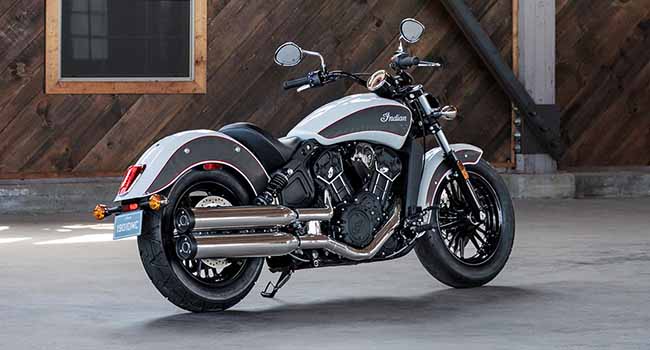
 No other motorcycle name has had as storied and controversial a history as Indian.
No other motorcycle name has had as storied and controversial a history as Indian.
After a dizzying number of bankruptcies, owner changes and legal wrangling, Indian Motorcycle has been re-established.
This time it’s under the umbrella of Polaris Inc., which purchased the company in 2011. Polaris manufactured the now-discontinued Victory line of motorcycles, and still makes various ATVs, boats and snowmobiles.
It’s been quite a ride. After going belly up way back in 1953, and languishing in oblivion, Indian suffered through the manoeuvrings and shenanigans of a slew of owners, including one who was eventually convicted of fraud, tax evasion and money laundering.
Many promises were made and thousands of T-shirts were sold but actual product was pretty thin on the ground.
In the late 1990s, the Indian name was resurrected, accompanied by a protracted legal struggle that, at one point, involved almost 100 trademark copyrights. Several companies were brawling for the rights to manufacture the legendary bike, and even former Chrysler chairman Bob Lutz was apparently involved in the brouhaha.
Harley-Davidson moving with the times by Ted Laturnus
There was also a Canadian connection. In the thick of the fight were Toronto businessmen Murray Smith and Mark Cooper, who eventually secured the coveted trademark asset rights. Indians were once again manufactured, this time out of Gilroy, Calif.
That too soon fell apart and the California facility shut down in 2003. Indian, it seemed, was once again destined to be a footnote in history.
But the Indian name obviously has huge resonance for a lot of people and the heavyweight bikes are now manufactured at the Polaris facility in Spirit Lake, Iowa.
Apparently, no components from the now-defunct Polaris Victory are shared by the new Indian. That’s a good thing, since the Victory motorcycles gained an iffy reputation for reliability. I owned two and they were the most unreliable motorcycles I’ve ever owned.

There are seven basic models in the company’s new lineup, with variations within these models. Most are powered by a proprietary Thunder Stroke V-twin engine that comes in various sizes, is fuel injected, and mated to either a five- or six-speed transmission.
In the Scout Sixty model, for example, it displaces one litre (61 cubic inches), and develops some 78 horsepower, which for a bike that weighs in at some 245 kg (540 pounds), gives it decent performance. It’s comparable to Harley-Davidson’s Sportster model but infinitely better looking. With a starting price of around $11,000, this one is a serious rival to the Sportster.
The hefty 364-kg Springfield, meanwhile, is propelled by a 111-cubic-inch engine mated to a six-speed transmission. Like every other heavy cruiser on the market, the emphasis here is on comfort and low-end grunt, rather than screaming high-rpm horsepower. Final drive is belt, with a gear-driven primary.
Like all those that have come before it, this breed of Indian is festooned with chrome, with fully valanced fenders, a generously-sized leather saddle and, of course, the illuminated Indian “war bonnet” mounted on the front fender.
There are also a few surprises in the standard equipment roster, including anti-lock braking, floating disc brakes front and back, cruise control and keyless ignition. The base Springfield starts at about $25,000. Comparisons with Harley’s Heritage Softail are inevitable.
And for those who like to drag the footpegs, the FTR 1200 delivers 123 horsepower, which, given the bike’s 480-plus-pound dry weight, makes for a fast piece of kit. Indian is claiming a 43-degree lean angle with this one, which makes it a bona fide corner-carver.
Any motorcycle manufacturer needs a proper national dealer network to get its foot in the door and Indian seems to have finally got this nailed down. Calgary, Edmonton, Vancouver, London and Barrie, Ont., Quebec City, Saskatoon and Winnipeg all have shops, among others.
Back in the day, Harley-Davidson and Indian were fierce rivals. Between them, they pretty much owned the North American motorcycle market. Now, however, upstarts like Yamaha, Honda, Suzuki, Kawasaki and Triumph all offer similarly-conceived cruisers that can match both makers point for point for performance, comfort and presence.
Will Indian permanently re-establish itself this time?
Only time will tell. Let’s get ready to rumble.
Ted Laturnus writes for Troy Media’s Driver Seat Associate website. An automotive journalist since 1976, he has been named Canadian Automotive Journalist of the Year twice and is past-president of the Automotive Journalists Association of Canada (AJAC).
The views, opinions and positions expressed by columnists and contributors are the author’s alone. They do not inherently or expressly reflect the views, opinions and/or positions of our publication.
